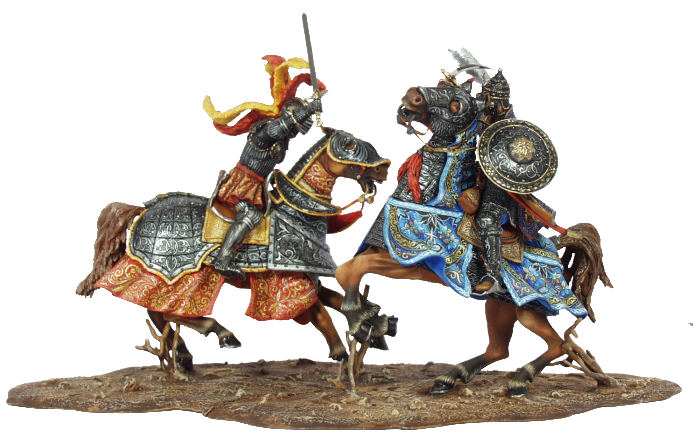Vienna, Austria
From the Quicksilver Metaweb.
This is a page for Vienna but specifically about the battle of the city
Battle of Vienna
The Battle of Vienna (as distinct from the Siege of Vienna some hundred-fifty years earlier), marked the final turning point in a 250-year struggle between the forces of Christian Europe and the Ottoman Empire. Over the 16 years following the battle, the Turks would be permanently driven south of the Danube River, never to threaten central Europe again.
The battle, which took place on September 12, 1683 pitted a large Austrian and German army of about 100,000 troops and their allies, a 30,000-man relief force under Jan Sobieski, King of Poland, against their Turkish besiegers. The Turks, commanded by Pasha Kara Mustafa, numbered approximately 140,000 men, although a large portion of them played no part in the battle.

Jan III Sobieski versus Pasha Kara Mustafa
Sobieski began planning a relief expedition to Vienna during the summer of 1683, when the hard-pressed Turks launched an all-out offensive against Austria. The two nations had been embroiled in conflict for more than 150 years, and Mustafa's assault was an attempt to put a final end to this. Starting in March, the Turks moved toward the city, and finally invested it on July 14. The previous winter, Austria and Poland had concluded a treaty in which the Austrian Emperor would support Sobieski if the Turks attacked Cracow; in return, the Poles would support Austria if Vienna were attacked.
The Polish king honored his obligations to the letter, going so far as to leave his own nation virtually undefended. He covered this with a stern warning to Count Teckley, the leader of Hungary (then an Ottoman satellite), whom he threatened with destruction if he tried to take advantage of the situation.
Mustafa's men had managed to take part of the walls of Vienna by exploding mines under them, but he inexplicably did not make dispositions to defend against Sobieski even after learning of his arrival. At 4 a.m. on September 12, the Austrian army on the left and the German forces in the center moved forward against the Turks. Mustafa launched a counterattack with most of his force. Then the Polish infantry launched a massive assault on the weak right flank. After 12 hours of fighting, Sobieski's men held the high ground on the right.
At about 5 p.m., four cavalry groups, one of them German-Austrian and the other three Polish heavy cavalry (hussars), 20,000 men in all, charged down the hills led personally by the Polish king. In the confusion, they made straight for the Ottoman camps, while the Vienna garrison sallied out of its defenses and joined in the assault. In less than three hours, the battle was won, as the Turks beat a hasty retreat to the south and east. Although no one realized it at the time, the entire war was won that day, as well. The Ottomans fought on for another 16 years before giving up, losing vast territories in the process.
The Turks lost about 15,000 men in the fighting, compared to approximately 4,000 for the allied Christian forces.